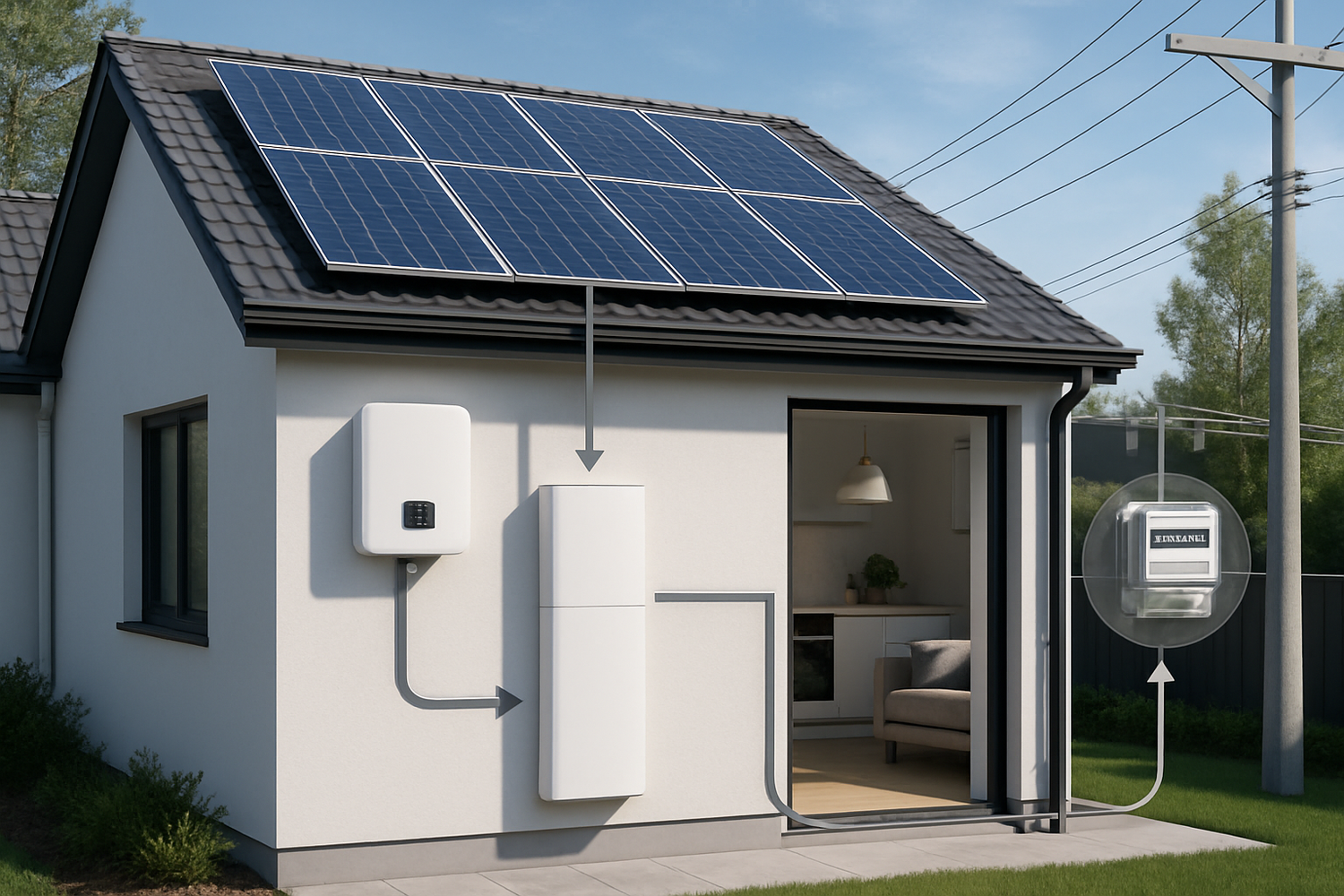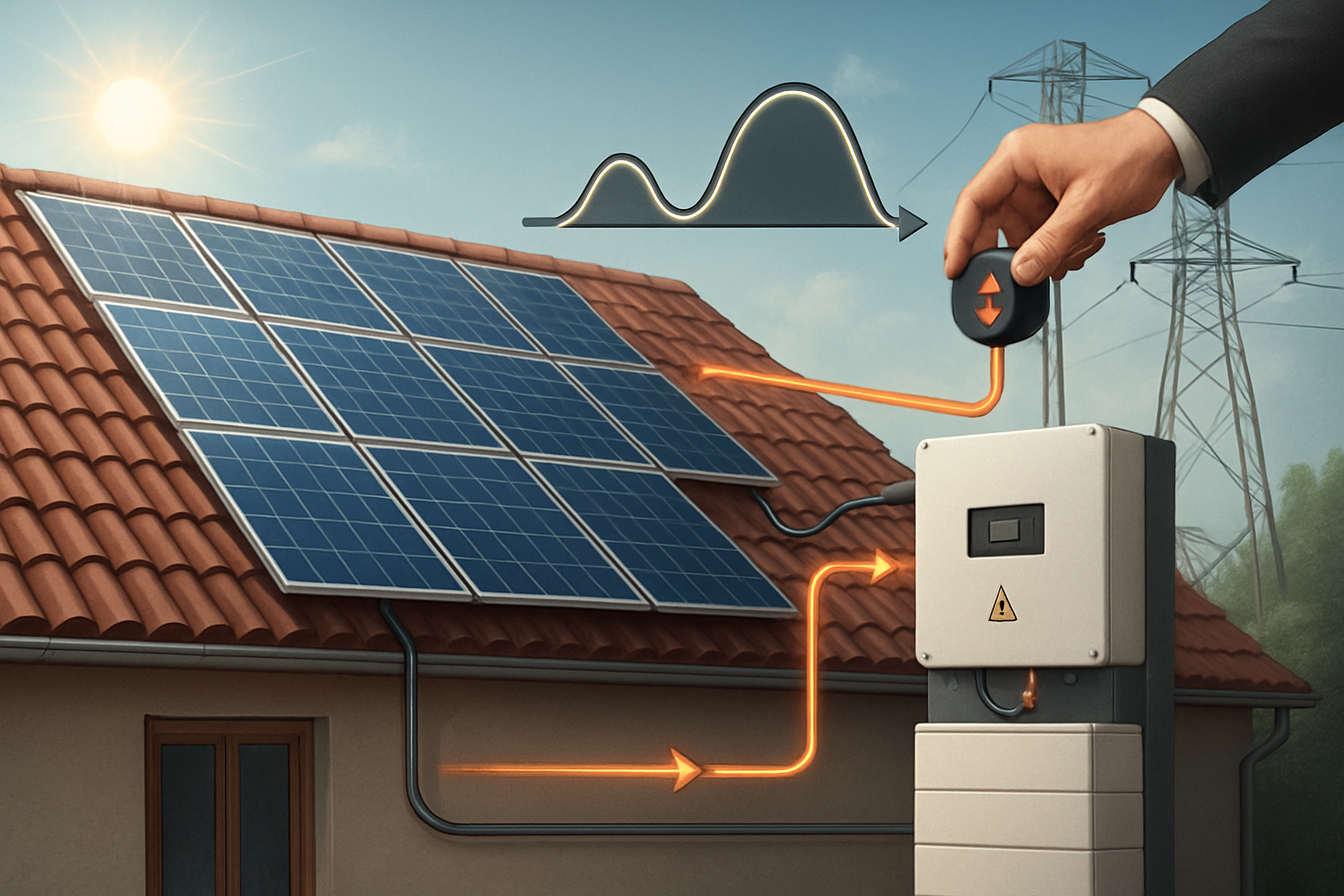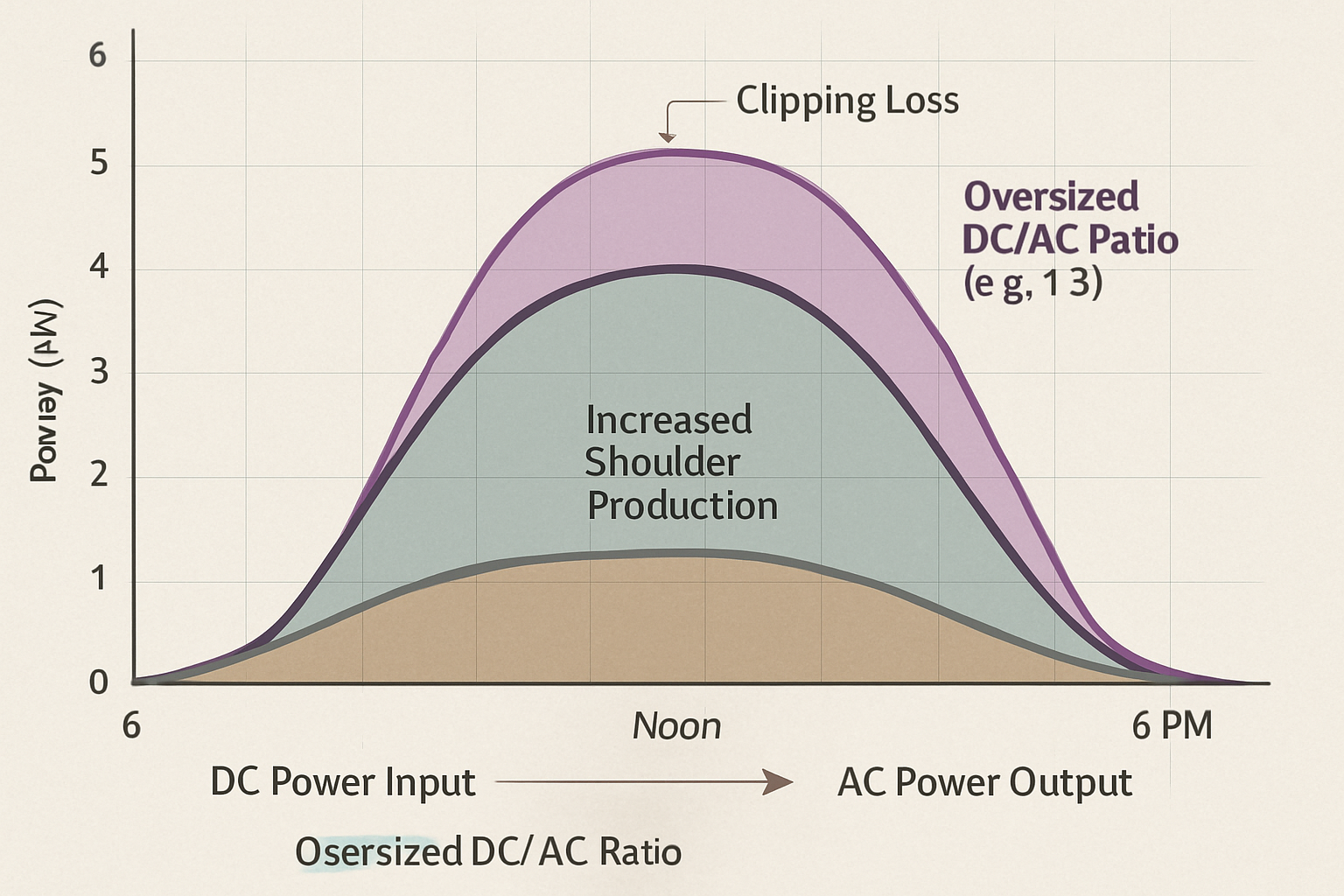The sun offers abundant energy, yet integrating this power into existing grids presents challenges, especially concerning excess generation. As more homes and businesses adopt solar, managing the flow of electricity back to the grid becomes crucial. Export limits, designed to maintain grid stability and prevent overloads, often mean that valuable solar energy goes unused. This article outlines a strategic approach to navigate these limits, focusing on the sophisticated capabilities of hybrid inverters, the precision of module-level power electronics (MLPE), and advanced control systems. You will gain insights into optimizing your solar investment and achieving greater energy independence.

Understanding Solar Export Limits
Why Export Limits Matter
Grid operators implement export limits for technical reasons, primarily to preserve the security of electricity supply by preventing grid congestion or voltage control issues. Technical curtailment is implemented by system operators for such reasons. Without these measures, a sudden influx of unmanaged power could destabilize the local grid infrastructure. The need for controllability of resources connected to low voltage grids is emerging in many countries. Beyond technical necessity, economic curtailment also occurs when generation is reduced due to price signals, reflecting an oversupply in the market.
The Impact of Curtailment
When your solar system generates more electricity than your home consumes and more than the grid allows you to export, that excess energy is curtailed. This leads to lost potential revenue from selling electricity back to the utility and reduces the overall economic efficiency of your solar investment. It means you are not fully leveraging the clean energy your panels produce, potentially jeopardizing up to 15% of solar PV generation by 2030 if integration measures are not implemented.
The Role of Hybrid Inverters
How Hybrid Inverters Manage Power Flow
Hybrid inverters are central to managing solar power effectively, especially under export limits. They intelligently direct the flow of electricity from your solar panels to your home's loads, to a connected battery storage system, or to the grid. Their integrated control capabilities allow for dynamic export limiting, ensuring your system complies with grid regulations while maximizing self-consumption. This means less energy is wasted, and more is used to power your home or stored for later. Our solar inverters are designed to convert DC power to AC efficiently, offering smart controls for grid interaction.
Integrating Storage for Enhanced Control
Pairing a hybrid inverter with a robust energy storage system, such as a high-performance lithium iron phosphate (LiFePO4) battery, creates a powerful solution. This combination allows you to store excess solar energy during peak generation times instead of exporting it to a constrained grid. When export limits are active, or when the sun isn't shining, you can draw power from your battery, further enhancing your energy independence. Our home energy storage systems, which integrate lithium batteries, hybrid inverters, and solar panels, exemplify this approach, offering a seamless way to manage energy flow.
| Feature | Traditional String Inverter | Hybrid Inverter |
|---|---|---|
| Grid Interaction | Primarily exports excess to grid | Smart export, prioritizes self-consumption, battery charge |
| Battery Storage Integration | Requires separate charge controller | Integrated for seamless storage management |
| Export Control Capabilities | Limited, often basic on/off | Advanced, programmable, dynamic adjustment |
| Energy Resilience (Backup) | Low (grid-dependent) | High (battery backup during outages) |
Precision with Module-Level Power Electronics (MLPE)
Granular Control at the Panel Level
Module-Level Power Electronics (MLPE), including power optimizers and microinverters, offer a refined layer of control over your solar array. These devices are crucial systems in solar energy setups, enhancing panel efficiency and maximizing energy output. Unlike traditional string inverters that treat all panels as a single unit, MLPE operates at the individual panel level. This allows each panel to perform optimally, even if others are affected by shading or soiling. For export limiting, this granular control means the system can precisely adjust the output of specific modules to meet grid requirements without unnecessarily curtailing the entire array. MLPE provides an extra layer of Maximum Power Point Tracking (MPPT) at the per-panel level.
Optimizing Performance and Compliance
MLPE significantly improves overall system performance by mitigating the impact of partial shading or module mismatch. The U.S. Department of Energy's Office of Energy Efficiency and Renewable Energy explains that MLPE can reduce energy losses due to partial shading of modules by 20%-35% and completely eliminate losses due to orientation mismatch. By ensuring each panel contributes its maximum possible output, the system can generate more energy throughout the day. Crucially, this precision also aids in compliance with export limits. When combined with a smart control system, MLPE can help fine-tune the total power output sent to the grid, ensuring you stay within permitted thresholds while maximizing your available solar energy.
Advanced Control Systems and Grid Integration
Smart Energy Management Systems
Modern solar and energy storage systems rely on sophisticated control systems to manage energy flows. These systems, often integrated within hybrid inverters or comprehensive home energy storage solutions, continuously monitor solar generation, household consumption, and battery charge levels. They make real-time decisions, for instance, prioritizing battery charging during periods of high solar output and low demand, or discharging the battery when grid prices are high or solar generation is low. Active power controllability requirements, including minimum and maximum ramp rates, may be imposed on generators, especially for variable renewable energy (VRE) sources like solar. These smart systems can manage such ramp rates to prevent significant yield losses and ensure grid stability.
Evolving Grid Codes and Future Readiness
The need for controllability of resources connected to low voltage grids is emerging in many countries. Grid codes are evolving to drive inverters to provide essential services like voltage control and frequency regulation. The IEA's 2010 roadmap suggests implementing grid codes that will drive inverters to provide these services. For systems dominated by distributed VRE, which are characterized by large numbers of small solar power plants dispersed throughout the power system, managing impacts often involves looking to the system side for flexible solutions, such as energy storage and distribution grid reinforcement. Our focus on integrated ESS development and advanced solar inverters aligns with these evolving requirements, helping you build a future-ready energy system that contributes positively to grid stability and allows for higher flexibility.
Crafting Your Export Limit Strategy
Key Considerations for System Design
Developing an effective export limit strategy begins with careful planning. You should thoroughly evaluate your local grid regulations, as these dictate the specific export limits and interconnection requirements. Consider your typical energy consumption patterns and how they align with your solar generation profile. A larger system might generate more excess power, making robust export management even more critical. Understanding these factors helps you size your system appropriately and choose the right technologies. Our company provides reliable and scalable energy solutions, helping customers achieve energy independence.
Practical Steps for Implementation
Once you understand your requirements, select a hybrid inverter that offers advanced export control features and is compatible with your chosen battery technology. Our solar inverters are designed to convert DC power to AC efficiently, offering smart controls for grid interaction. Integrate high-performance LiFePO4 batteries to store surplus energy, maximizing your self-consumption. Configure the control settings of your hybrid inverter and energy management system to align with local utility rules. Regularly monitor your system's performance through a dedicated app or portal to ensure it operates efficiently and within compliance. This proactive approach ensures you get the most value from your solar investment.
Concluding Thoughts on Solar Energy Management
Navigating solar export limits is a growing concern for solar owners. By strategically employing hybrid inverters, MLPE, and intelligent control systems, you can transform these challenges into opportunities. These technologies enable precise energy management, maximize self-consumption, and ensure compliance with grid regulations. Embracing these advanced solutions empowers you to achieve greater energy independence and contribute to a more stable and resilient energy future.
Frequently Asked Questions
What is solar curtailment?
Solar curtailment refers to the reduction of electricity output from a solar power system, either voluntarily or by instruction from a grid operator. This can happen for technical reasons, like grid congestion or voltage issues, or economic reasons, such as an oversupply of electricity in the market.
How do hybrid inverters help with export limits?
Hybrid inverters are designed to manage the flow of solar energy by directing it to your home's loads, a connected battery storage system, or the grid. When export limits are in place, a hybrid inverter can prioritize charging your battery or powering your home, thus reducing the amount of excess electricity sent to the grid and helping you stay within regulatory limits.
What are MLPE and why are they useful for managing solar output?
MLPE, or Module-Level Power Electronics, are devices like power optimizers or microinverters that operate at the individual solar panel level. They optimize the output of each panel independently. For managing solar output and export limits, MLPE allows for more granular control, ensuring that even if one panel's output is adjusted, the rest of the array can continue to perform optimally, contributing to more precise export management.
Are export limits mandatory everywhere?
Export limits are not universally mandatory but are becoming increasingly common, especially in areas with high solar penetration. Local utility companies and grid operators implement these limits to maintain grid stability, prevent overvoltage, and manage local infrastructure capacity. You should always check your local grid codes and utility interconnection agreements.
Can energy storage eliminate export limits?
Energy storage, particularly with a well-integrated hybrid inverter, can significantly mitigate the impact of export limits. By storing excess solar energy during peak generation, you can reduce the amount of power exported to the grid. While it may not always completely eliminate export limits, it allows you to maximize self-consumption and use more of your generated electricity, moving closer to energy independence.





Leave a comment
All comments are moderated before being published.
This site is protected by hCaptcha and the hCaptcha Privacy Policy and Terms of Service apply.